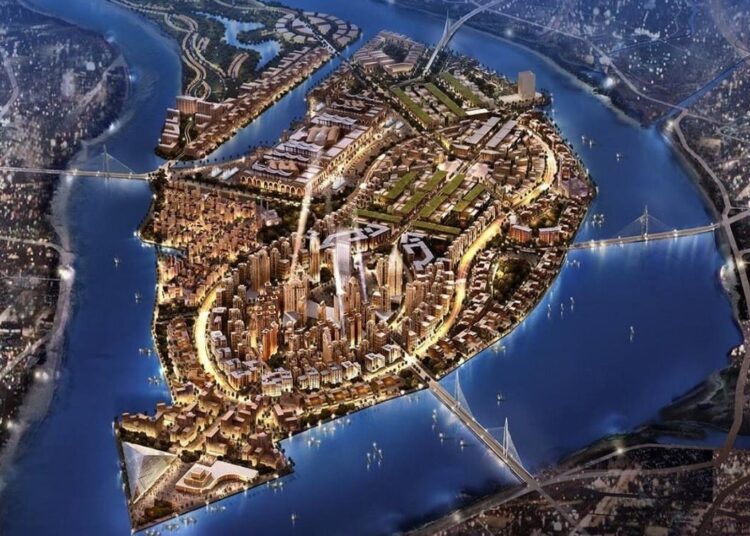For those of you who like Scrabble and crossword puzzles, you will be sure to find a use for the following words: ait, eyot, holm. They all refer to an island in a river.
Out of the 255 aits, eyots and holms in the Nile, Warraq is unique in that its 1,300 feddans (acres) are bordered by Qalyubia Governorate on the east, Cairo at the north and Giza, the west.
As for development of this predominantly green patch amid the urban sprawl, it’s been a long time coming. In 2000, the then Prime Minister Atef Ebeid issued a decree to this effect.
Economists and architects hail this development plan, saying that it will transform the island into a “twinkling pearl”. However, one feels that the “twinkling” refers more accurately to the smiling eyes of an architect’s bank manager than any glass and concrete structure that will assuredly be hastily erected to alter the Cairene skyline slightly.
Says architect Ahmed Zazaa: “Development will improve the island, lifting it out of poverty and to a haven for progress and investment.”
Ahmed Salah, who is a professor in urban planning at Ain Shams University, took a different view, saying: “Previous construction on the island is considered an encroachment on state land because Warraq is listed as agricultural land.”
“The government has no intention of establishing any investment projects that may harmful the island environment,” Salah added.
Premier Ebeid’s decree met with opposition from Warraq residents as they refused to leave their land and homes because clauses referring to compensation or alternative housing were absent. Ebeid’s successor, Ahmed Nazif came to the rescue and put them in.
Fast forward to 2018, Sherif Ismail, who was prime minister at the time, issued another decree for the establishment of a new urban community. The government-owned land was handed over to the New Urban Communities Authority.
It took a series of meetings to re-assure residents that their rights would be safeguarded. Most of the islanders were persuaded with the promise of compensation and alternative plots of land and housing lands. Minister of Housing, Utilities and Urban Communities Assem el-Gazzar told a press conference last August that LE6 billion had been paid out in compensation and that illegal structures on the riverbanks will be demolished.
President Abdel Fattah El Sisi ordered the government to improve the island’s infrastructure, declaring that development work must meet the needs of residents.
The Urban Communities Authority will build 10,000 housing units on 44 feddans out of the total 160 feddans allocated to residents who wish to live on the island after development.
The project will cost LE5 billion plus LE1.1 billion for green areas, LE4 billion for amenities, and LE400 million for a road network.
Warraq Island will become Horus City, divided into eight residential areas and a business district overlooking the river. For those residents who received an apartment as compensation, we hope that it will be a home from ‘holm’.







Discussion about this post